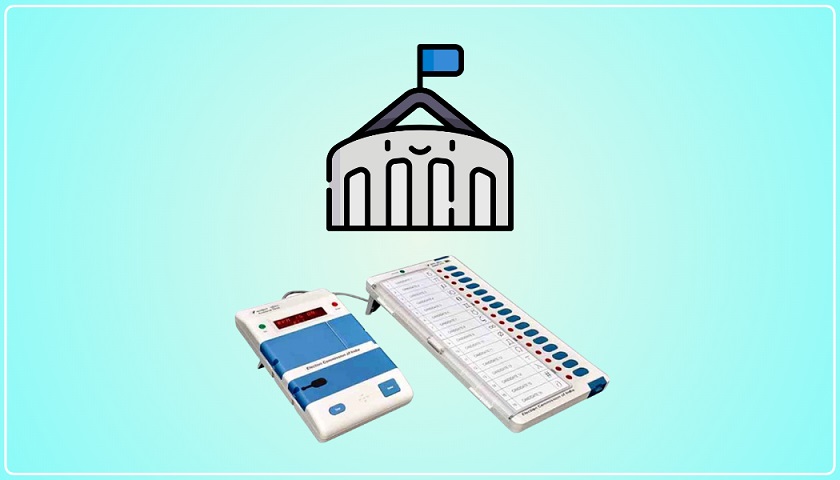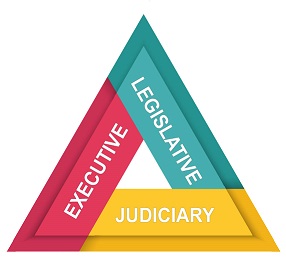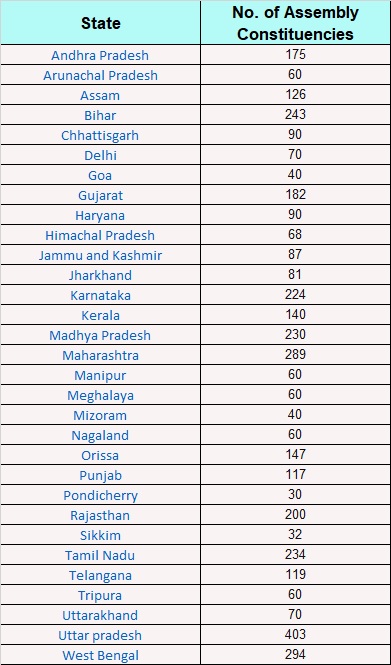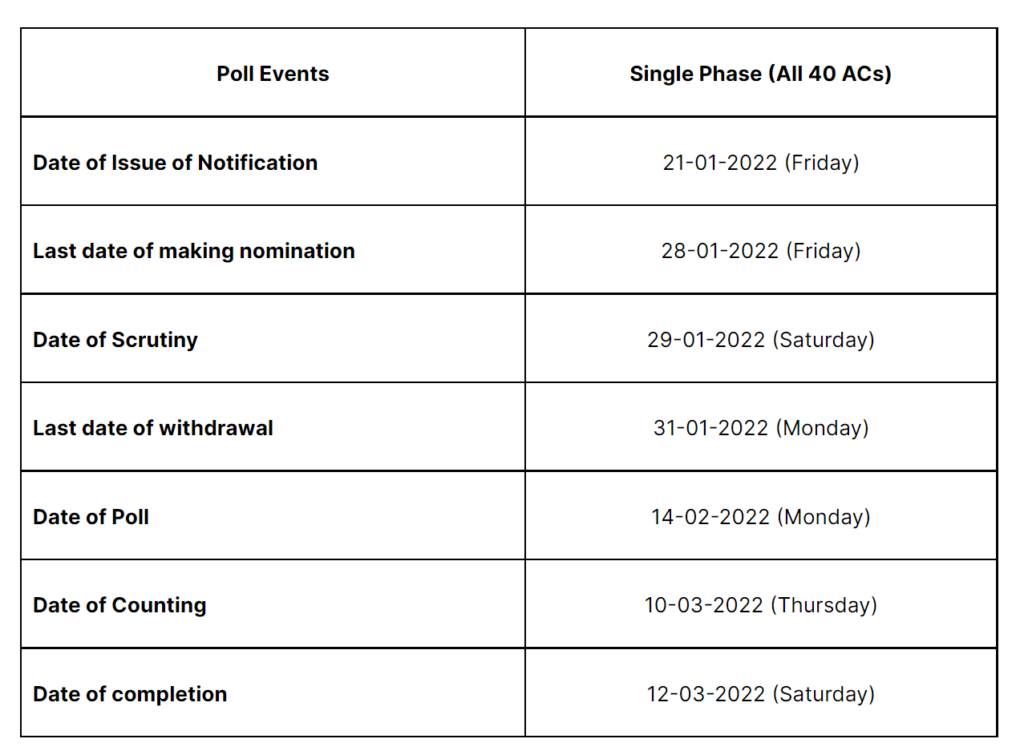
In this article, we will try to understand the process of election of Vidhan Sabha/ State legislature Assembly in India, for that, the contents of this article will include:
- Basic structure of Indian Government
- Structure of Vidhan Sabha
- Election process of Vidhan Sabha
Basic Structure of Indian Government
As we know Indian political System follows the principles of Federalism that’s why we have a 2-Tier government System.
- Union Government
- State Government
There are 3 organs in any government

As Union Government legislative body is Parliament, Similarly the state government legislative body is Vidhan Mandal.
India follows a bicameral legislature system in union legislature, according to which
The Parliament is composed of the president and two houses
- Lower House : Lok Sabha
- Upper House : Rajya Sabha
Similarly, a few states of India also follow this bicameral setup, under which
The state legislature is composed of the Governor and two houses
- Lower House : Vidhan Sabha | State Legislative Assembly
- Upper House : Vidhan Parishad | State Legislative Council
The states in which this setup is followed are Uttar Pradesh, Bihar, Maharashtra, Telangana, Andhra Pradesh, and Karnataka. All other states in India have a Governor and Vidhan Sabha.
Structure of Vidhan Sabha | State Legislative Assembly
There are 28 states in our country, and the populations of all these states are different. Therefore the total number of seats of Vidhan Sabha of each state can’t be the same. All the states of India are divided into several constituencies according to their population. one seat is fixed for each constituency. However, the population data used for this calculation is of census 1971. This will be done till 2026, after that perhaps we can get to see changes in the number of seats in the Legislative Assembly of the states. However, the limits for the number of seats are fixed, the maximum there can be only 500 seats in the Legislative Assembly of any state and the minimum should not be less than 60 seats.
Though there are some exceptions to this minimum seat criteria
- Goa : 40 seats
- Mizoram : 40 seats
- Sikkim : 32 seats
the state-wise list of the total number of seats in the State Legislative Assembly.

The total of all these seats is 4121. If we talk about the reservation in these seats, then in every state a few seats are reserved for SC(Scheduled Castes) & ST(Scheduled Tribes) are reserved, according to their population in those states. Out of the total 4121 seats, 614 seats are reserved for SCs and 554 seats are reserved for STs.
Election process of Vidhan Sabha | State Legislature Assembly
As we know, in India, whether it is the Loksabha Election of the centre or the Vidhan Sabha elections of the states, all are conducted by ECI(Election Commission of India). The rules and regulations of the conduct of ECI are given in The Representation of the People Act 1951.
For the state in which the elections are to be held, first of all, ECI prepares a schedule for the Election.
For Example:

ECI also prepares a list of Expenditure, General, and Police Observers.
- IRS officer as Expenditure Observers
- IAS officers as General Observers
- IPS officers as Police Observer
These officers are appointed for all the constituencies of the state to oversee the election process on the behalf of ECI.
Along with this, ECI also appoints RO(Returning Officer) and AROs-(Assistant Returning Officers) for each constituency to manage the functions related to the election in every constituency.
After preparing all this, ECI sends the recommendations of the election schedule to the Governor of the state. The Governor then, according to the timeline of the election schedule, issues the official notification. After which ECI officially announce the election in the state. After which Returning officers of each constituency will issue a public notice for the same.
These notices are issued in English and the local languages of the state.
Along with ROs and AROs notice boards, these notices are published on notice boards of Panchayat Samitis, Gram Panchayats, Village offices, Taluk offices, etc.
As soon as the ECI announces the election schedule, The Model Code of Conduct comes into force in that state for the need of ensuring free and fair elections.
After that begins the Nomination process of the candidates for the election. All the candidates whether they are a ticket holder of any party or the individual candidates have to file their Nomination in hand to the Returning Officer of their constituency, to take part in the election. The timing of filing the nomination is between 11:00 AM to 3:00 PM, up to the last date of making the nomination. An amount of ₹5000 has to be deposited by these candidates as a security deposit. This amount is ₹2500 for SCs & STs. There are also basic eligibility criteria to take part in Vidhan Sabha elections, such as
- The candidate must be above the age of 25 years.
- The candidate must be a citizen of India.
- The candidate must have the Voter-ID card issued by the ECI.
Along with these, there are also some other requirements that ECI mentions on their website. A single candidate can contest the election from a maximum of 2 constituencies.
After Nominations, comes the date of Scrutiny, in which ECI verifies the applications of candidates.
Any candidate who wants to withdraw his name from the Election can do so up to the last date of the withdrawal.
After this, ECI publishes the final list of candidates contesting the election, along with the allotment of their election symbols. After which candidates can release their manifestos, and begin their Campaigns. Candidates get around 2 weeks for their campaigns and the amount which each can spend on their campaign is also fixed by ECI. The limit in larger states is around ₹ 10 Lakhs.
To ensure a fair election, all the candidates are observed by ECI through observers appointed by them.
After the campaign time is over, comes the time of Election. The polling is held on the due date decided by the commission. RO of a constituency is responsible for conducting the election in his constituency. AROs assist him, but they cannot be present at all the polling stations which come under their constituency, because a constituency has several polling states.
To manage each polling station, presiding officers are appointed and polling officers are appointed to assist them. These presiding and polling officers are government officials of that state such as government school principals, senior teachers, etc.
RO’s responsibility is to safely send EVM(electronic voting machines) and VVPAT machines to all the polling stations of their constituency, after which their presiding officers manage the process, under their guidance.
The presiding officers reach their allotted polling stations early in the morning on the day of election polling. It is their responsibility to conduct the election process smoothly at their polling stations. Every vote at the polling booth is cast in their presence so that it is ensured that every person casts only one vote. If the Presiding officer faces any issue he can report it to his RO.
The voting time starts at 7:00 AM. every person who possesses a voter-id card and has their name in the voter list can vote from their constituency.
ECI also keeps an eye on the whole process through their appointed observers. To assist these observers they also appoint a few micro-observes who visit every polling station to verify, whether the operations of the election are being conducted fairly or not. If there is any discrepancy in the process of casting votes at any polling station then its complaint can be lodged to the RO of that constituency. After the completion of the election day, all the EVMs and VVPAT machines are sealed and transported to the strong room. A strong room of a constituency is a place where all the EVMs (along with VVPATs) of all the polling stations under that constituency are kept sealed with double locks.
Next comes the counting day according to the schedule of the election. On this day, in each constituency, the strong is opened in the presence of their RO, and the votes of all the EVMs are counted. To keep a check on the process of counting, ECI also appoints a few counting observers who keep an eye during the counting process. Apart from these, the candidates of those constituencies are also present there. After the counting process is over, the result(winner of each constituency) is declared. And all the winners now become the MLAs(Members of Legislative Assembly) or we can say that members of Vidhan Sabha.
After this, all the data is collected and sent to the Governor of the state. The party that has the majority i.e. more than 50% of the total seats of Vidhan Sabha gets the invitation from the governor to form the government. In case neither party get the majority, a coalition government is formed. The parties having the highest number of seats are called by the governor one by one if they can prove the majority with the support of other parties or individual MLAs. If still, no party is able to prove majority, then temporarily The President’s Rule is imposed in that state, and after a few months, the election is conducted again.
The party which has the majority, its representative, or whatever person that party deed is appointed as CM(Cheif Minister) by the governor of the state. And further, all the members of the Executive i.e. COMs(Council of Ministers) are appointed by the governor on the recommendation of the chief minister.
So this is the complete process of elections of the Vidhan Sabhas | legislative assemblies of the Indian States.
You may refer to this video if you want the explanation in Hindi






